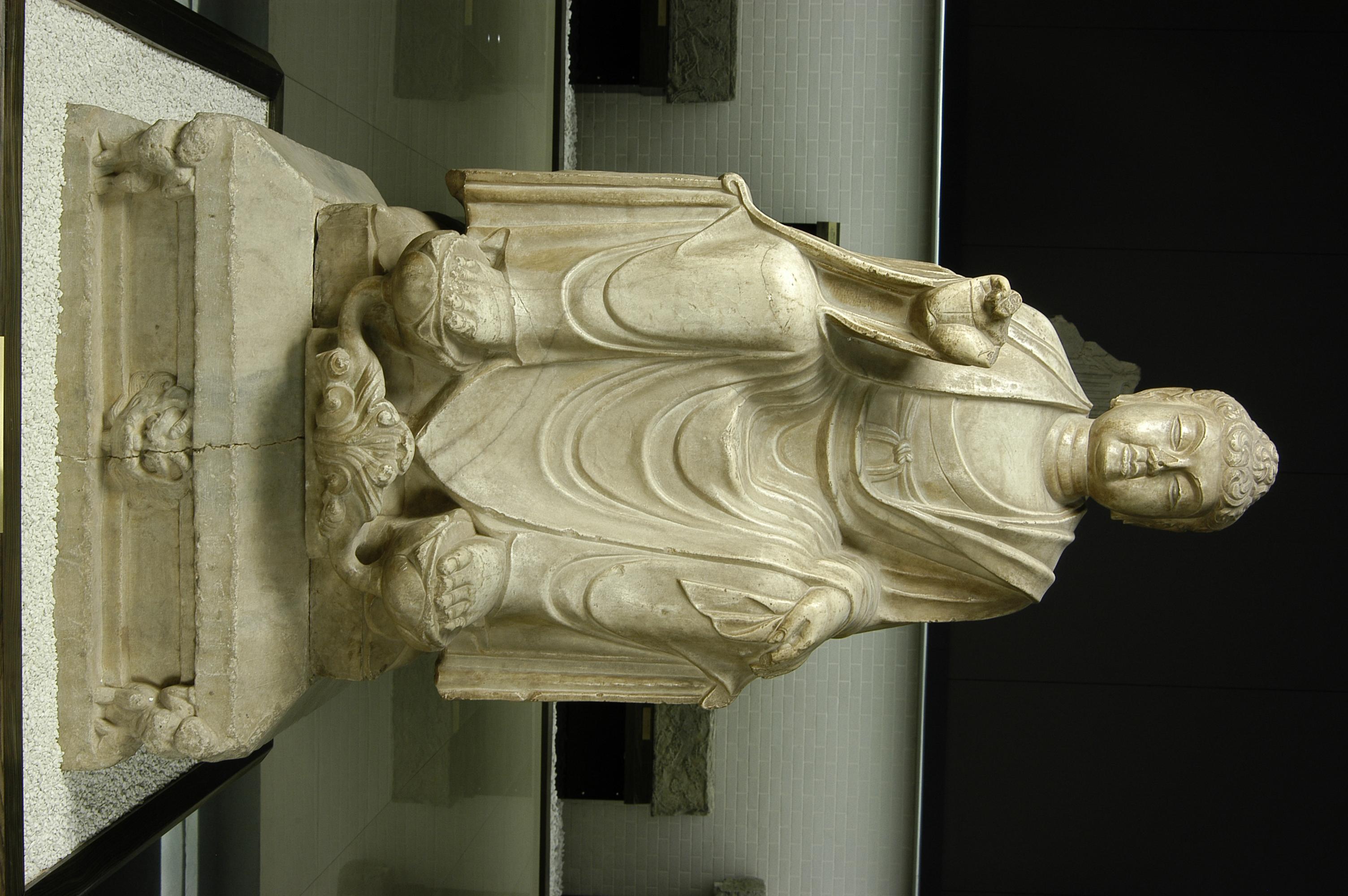Date: Tang Dynasty (618-907)
Provenance: Solicited from the Xinxiang Museum in 1997
Measurements: Height: 147 cm
The statue shows Maitreya's facial features as round and full, with three wrinkles on the neck. The outer garment is a kasaya, and the inner garment is a sankaksika with a knotted belt in front of the chest. The folds of the outer garment extend down to the feet; the hands are in the gesture of teaching mudra; both legs hang down, leaning on a square pedestal; and the feet rest on two blooming lotuses. Below the Buddha seat is a square waist-bound platform, and each corner is carved with a Yaksha supporting it. Additionally, a beast head is carved in the middle of each side of the platform.
Maitreya Buddha statues were popular in the Northern Wei Dynasty (386-534) and continued to flourish until the Sui and Tang dynasties (589-907). The portrayal of Buddha evolved through four stages: in the early period, Maitreya statues appeared with crossed ankles, reflecting the image of Maitreya teaching the Dharma in Tusita Heaven; during the Northern Qi Dynasty (550-577), Maitreya statues mostly appeared as seated figures with crowns, reflecting the image of Maitreya descending from Tusita Heaven to the human realm before becoming Buddha; in the Tang Dynasty, Maitreya began to transform into a Buddha figure seated in Buddhist attire, reflecting the image of Maitreya attaining Buddhahood under the dragon flower tree; and in the Song Dynasty (960-1279) and later, due to the legend of the big-bellied monk Qici's parinirvana, people believed he was the reincarnation of Maitreya. Therefore, statues of Maitreya with a large belly became widely popular as a beloved Buddhist image.

